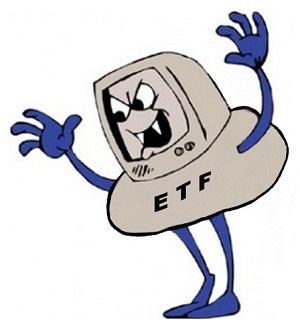Courtesy of Pam Martens.
Last night ABC began its two-part series on the Bernie Madoff fraud. Viewers will be reminded about how investment expert, Harry Markopolos, wrote detailed letters to the SEC for years, raising red flags that Bernie Madoff was running a Ponzi scheme – only to be ignored by the SEC as Madoff fleeced more and more victims out of their life savings.
Today, there are two equally erudite scribes who have jointly been flooding the SEC with explosive evidence that some Exchange Traded Funds (ETFs) that trade on U.S. stock exchanges and are sold to a gullible public, may be little more than toxic waste dumped there by Wall Street firms eager to rid themselves of illiquid securities.
The two anonymous authors have one thing going for them that Markopolos did not. They are represented by a former SEC attorney, Peter Chepucavage, who was also previously a managing director in charge of Nomura Securities’ legal, compliance and audit functions. We spoke to Chepucavage by phone yesterday. He confirmed that two of his clients authored the series of letters. Chepucavage said further that these clients have significant experience in trading ETFs and data collection involving ETFs.
Throughout their letters, the whistleblowers use the phrase ETP, for Exchange Traded Product, which includes both ETFs and ETNs, Exchange Traded Notes. In a letter that was logged in at the SEC on January 13, 2016, the whistleblowers compared some of these investments to the subprime mortgage products that fueled the 2008 crash, noting that regulators and economists were mostly blind to that escalating danger as well. The authors wrote:
“The vast majority of ETPs have very low levels of assets under management and illiquid trading volumes. Many of these have illiquid underlying assets and a large group of ETPs are based on derivatives that are not backed by physical assets such as stocks, bonds or commodities, but rather swaps or other types of complex contracts. Many of these products may have been designed to take what were originally illiquid assets from the books of operators, bundle them into an ETP to make them appear liquid and sell them off to unsuspecting investors. The data suggests this is evidenced by ETPs that are formed, have enough volume in the early stage of their existence to sell shares, but then barely trade again while still remaining listed for sale. This is reminiscent of the mortgage-backed securities bundles sold previous to the last financial crisis in 2008.”
The authors also note in this same letter that they have been presenting their evidence of “significant red flags” and “fundamental flaws” to the SEC since March 2015 and that the industry has not disputed the evidence. However, disclosures of these risks in the product offerings has not been forthcoming either.
…




